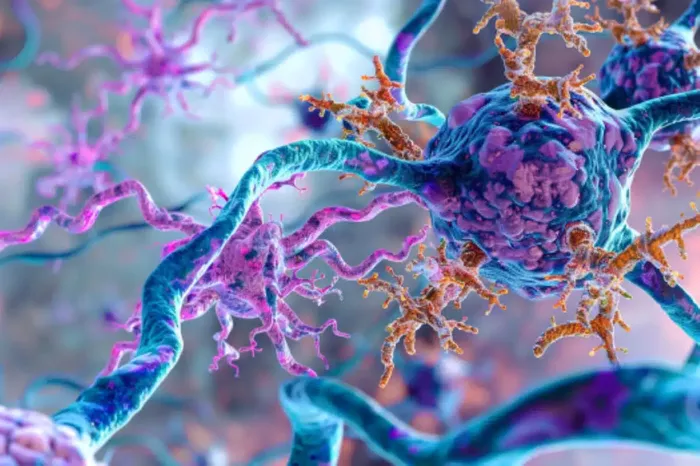In a significant scientific breakthrough, researchers have identified a molecule that plays a crucial role in turning off the activity of brown fat. This discovery could potentially open new doors for understanding and treating obesity and related health issues.
Brown fat, also known as brown adipose tissue (BAT), is distinct from the more familiar white fat that accumulates around the belly and thighs. Its unique function lies in its ability to burn calories from the food we consume and convert them into heat. This is particularly beneficial when exposed to cold conditions, like during winter swimming or cryotherapy. For years, it was thought that only small animals such as mice and newborns possessed brown fat. However, recent studies have shown that a certain percentage of adults retain their brown fat throughout their lives. Given its remarkable calorie – burning capabilities, the scientific community has been actively seeking ways to safely activate brown fat to combat the growing problem of obesity.
A collaborative study led by researchers from the University of Southern Denmark and the University of Bonn in Germany has revealed that brown fat has an unknown internal mechanism that deactivates it shortly after activation. This mechanism limits the potential of brown fat as a treatment for obesity. The research team, through advanced techniques for predicting unknown proteins, has now pinpointed a protein named “AC3 – AT” responsible for this shutdown process.
When the team investigated mice genetically engineered to lack AC3 – AT, they made some interesting observations. These mice were found to be resistant to becoming obese. Their bodies were more efficient at burning calories and could increase their metabolic rates by activating brown fat. In an experiment, two groups of mice were fed a high – fat diet for 15 weeks. The group without the AC3 – AT protein gained less weight than the control group and had a healthier metabolic profile. They also accumulated less body fat and had an increase in lean mass. Since AC3 – AT is present not only in mice but also in humans and other species, this finding has direct therapeutic implications for humans.
Although the amount of brown fat in humans decreases with age, and adults don’t have as much as newborns, it can still be activated, for example, by exposure to cold. When activated, it can enhance an individual’s metabolic rate, which may assist in maintaining weight loss when calorie intake is excessive.
This study not only identified AC3 – AT, a previously unknown shorter form of the AC3 protein, but also discovered other unknown protein/gene versions that respond to cold exposure, similar to AC3 – AT. However, further research is needed to clarify the therapeutic effects of these alternative gene products and their regulatory mechanisms during BAT activation. Understanding these molecular mechanisms not only provides insights into the regulation of brown fat but also holds promise for uncovering similar mechanisms in other cellular pathways. This knowledge could be instrumental in advancing our understanding of various diseases and developing new treatment strategies.
The research was carried out as part of the DFG Collaborative Research Center Transregio – SFB 333 “Brown and Beige Fat – Organ Interactions, Signaling Pathways and Energy Balance (BAT Energy)” and the Novo Nordisk Foundation Center for Adipocyte Signaling (AdipoSign) at the University of Southern Denmark. The findings were published in a relevant scientific journal, attracting significant attention from the scientific community. This discovery represents a major step forward in the field of fat metabolism research and offers new hope for the development of innovative treatments for obesity and related cardiometabolic diseases.
Related topics:


































